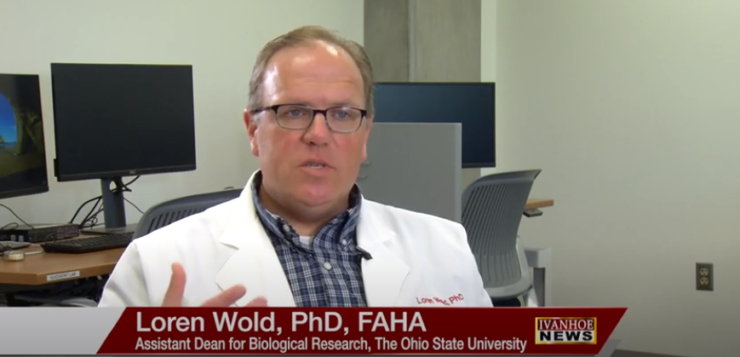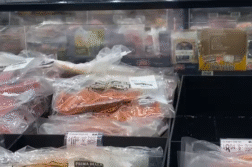Loren Wold, PhD, Professor of Medicine and Nursing, and Assistant Dean for Biological Health Research in the College of Nursing, talks about the possible impacts of World Trade Center Dust on heart disease.
What is your area of expertise?
WOLD: My area of expertise is cardiovascular physiology. My current research interests are examining the role of the environment on health and disease, in particular, effects on the heart.
Tell me a little bit about the project that you and NYU are getting into.
WOLD: We’ve been working together for a couple of years now. This project is really an expansion of what we’ve been doing. Initially, we were playing a more minor role in looking at the cardiac effects of hearts from preclinical models of World Trade Center dust exposure. This new project is looking at a time course of exposure. So, my colleagues at NYU collected dust and debris when the towers collapsed in 2001. This is actually the only dust from the day of collapse that anyone has. We’re taking the original dust and re-aerosolizing that dust and exposing it in a preclinical model in rats.
Can you explain in more detail what you’re actually doing with the dust?
WOLD: What we’re doing is re-aerosolizing it. So, we expose animals to the dust at specific concentrations which would be like what a first responder would’ve been exposed to on the day that the towers collapsed. The dust is just put back into the confined exposure system.
How are you splitting the research? What is NYU’s role? And what is your lab’s role?
WOLD: My colleague, Mitch Cohen at NYU, runs the lab that collected the dust. They have the exposure system that is tested and sort of a “tried and true” exposure paradigm. We do very similar exposures here on our campus. It’s easier to not have to transport the dust that they expose. Then, they ship us the live animals. We are looking at different time points that are equivalent to different yearly time points in humans. So, obviously in the animals, their aging is accelerated. One year in humans is closer to a month in the rat model. We can look at specific time points to see the development of both cardiovascular, but also neurocognitive, changes from those two days of exposure.
Where are you in terms of the timeline for the research?
WOLD: We have just started the exposures now of the animals that will be shipped here from NYU. We have to time things with the current pandemic going on as well as the heat wave when we can actually transport the animals because they are transported in temperature-controlled environments. This allows us to see a window into the changes in cardiac function. We track echocardiography, which is the same as if you or I were to go into the cardiologist and have an echo or echocardiogram done. What that does is looks at heart function of both the left and right side. It looks at the ability of your heart to pump the blood necessary to circulate throughout the body. We use that same instrument in animals and are able to track the progression of cardiovascular dysfunction over time. This is a one-year project, and the nice part is there’s always an option for an additional year if all of the science is not completed in a timely fashion.
Is there something specifically in the dust that researchers are looking for?
WOLD: The dust has been analyzed multiple times and we know it contains many heavy metals and other particulates of certain sizes. We really approach it as a heterogeneous mixture of certain things at different sizes. The problem is that it’s high in a lot of heavy metals, asbestos and other components from when the towers collapsed. There does seem to be something unique from it compared to exposing the animals to other concentrated dust particles, such as from a diesel exhaust pipe. You can collect the exhaust and concentrate the particles. We’re not quite sure what that sort of magic element is.
What are the implications?
WOLD: I think the implications are multifold. First and foremost, is to understand the progression of these pathologies in the first responders. The group in New York, there’s really one physician team that treats all first responders that were part of the unfortunate events in 2001. What they’re now seeing are these cardiac complications and lung issues, as well as early onset neurodegenerative issues. Our animal model will allow us to look at how these pathologies present themselves and what are potential ways that we can reduce or mitigate the complications from those pathologies. Many of the patients experience early onset (in their 40s or 50s) with cardiac dysfunction. A reduction in the ability of the heart to function over time that is not explained by other complications, such as hypertension obesity, etc… It is a very strong correlation. We know correlation does not mean causation, but we’re really interested in why this cohort of subjects has a greater incidence of cardiac complications. Some of the anecdotal data in this group is showing an early onset of Parkinson and Alzheimer’s-like disease. We know that certain people with different types of environmental exposure can have an early onset Alzheimer’s like phenotype. It’s scary to think about, but these first responders seem to have a much higher concentration of or much higher incidence of cardiovascular, pulmonary and neurological issues.
Interview conducted by Ivanhoe Broadcast News.
END OF INTERVIEW
This information is intended for additional research purposes only. It is not to be used as a prescription or advice from Ivanhoe Broadcast News, Inc. or any medical professional interviewed. Ivanhoe Broadcast News, Inc. assumes no responsibility for the depth or accuracy of physician statements. Procedures or medicines apply to different people and medical factors; always consult your physician on medical matters.
If you would like more information, please contact:
Amy Colgan
Sign up for a free weekly e-mail on Medical Breakthroughs called First to Know by clicking here




